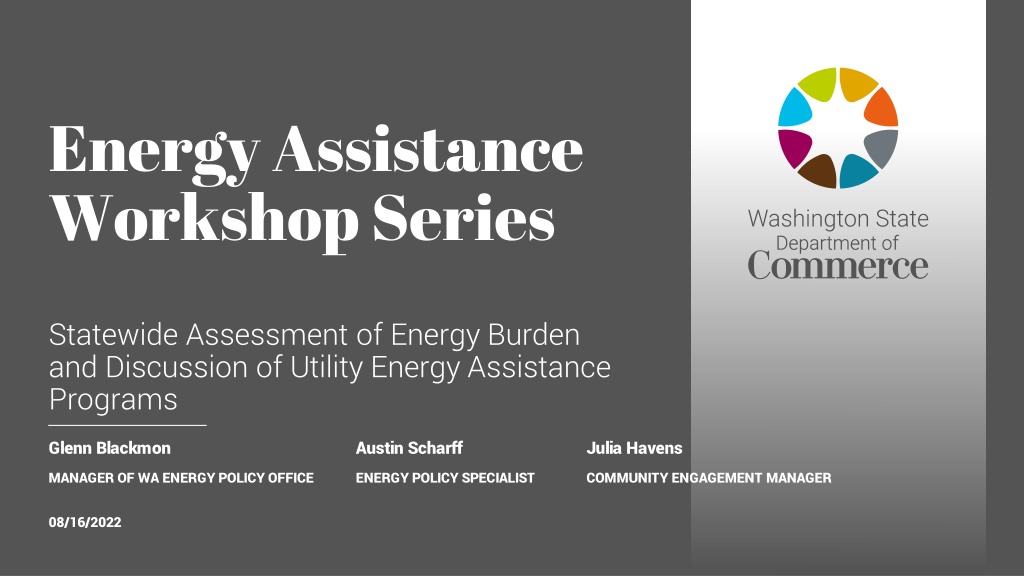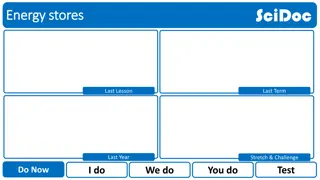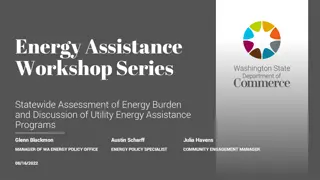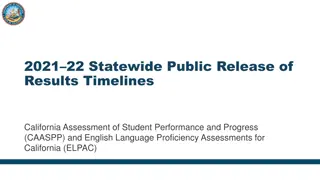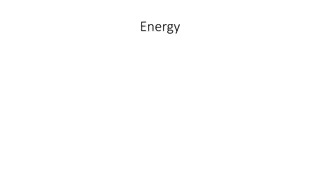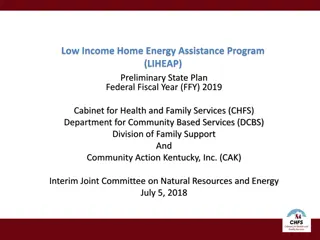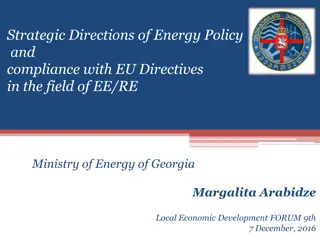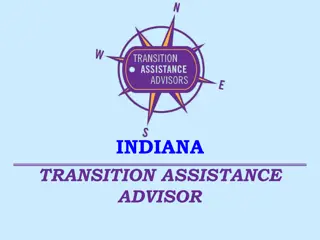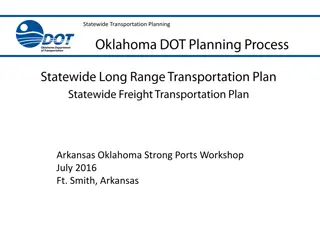Statewide Energy Assistance Workshop Series
"Assessment and discussion of energy burden, utility assistance programs, clean electricity law in Washington state. Goals include evaluating mechanisms for prioritizing low-income households and submitting a legislative report. Additional support work includes technical advisory, data cleaning, and community conversations."
Download Presentation

Please find below an Image/Link to download the presentation.
The content on the website is provided AS IS for your information and personal use only. It may not be sold, licensed, or shared on other websites without obtaining consent from the author.If you encounter any issues during the download, it is possible that the publisher has removed the file from their server.
You are allowed to download the files provided on this website for personal or commercial use, subject to the condition that they are used lawfully. All files are the property of their respective owners.
The content on the website is provided AS IS for your information and personal use only. It may not be sold, licensed, or shared on other websites without obtaining consent from the author.
E N D
Presentation Transcript
Energy Assistance Workshop Series Statewide Assessment of Energy Burden and Discussion of Utility Energy Assistance Programs Glenn Blackmon Austin Scharff Julia Havens MANAGER OF WA ENERGY POLICY OFFICE ENERGY POLICY SPECIALIST COMMUNITY ENGAGEMENT MANAGER 08/16/2022
We strengthen communities HOUSING HOUSING HOMELESSNESS HOMELESSNESS INFRASTRUCTURE INFRASTRUCTURE BUSINESS BUSINESS ASSISTANCE ASSISTANCE ENERGY ENERGY PLANNING PLANNING COMMUNITY FACILITIES COMMUNITY FACILITIES CRIME VICTIMS & CRIME VICTIMS & PUBLIC SAFETY PUBLIC SAFETY COMMUNITY COMMUNITY SERVICES SERVICES 2 WASHINGTON STATE DEPARTMENT OF COMMERCE
Energy Assistance Workshops Goals: 1. Understand the availability and accessibility of energy assistance programs and funding to low-income households. 2. Evaluate the effectiveness of additional mechanisms for energy assistance and ways to prioritize those households with a high energy burden. Outcome: The first biennial legislative report on energy assistance Commerce (COM) intends to submit the report by Jan. 1, 2023 4 WASHINGTON STATE DEPARTMENT OF COMMERCE
Other supportive work Energy Assistance Technical Advisory Team Utility Data Cleaning, Aggregation, and Review Utility Data Collection and Reporting Feedback Session Small group discussion schedule for Monday, Aug. 22. Community Conversations (Date TBD) If you would like to help us promote a Community Conversation with the audience to include residents with lived experience accessing Utility Company supported energy assistance, please put your email in the chat. 5 WASHINGTON STATE DEPARTMENT OF COMMERCE
Todays agenda Better understand the energy assistance portions of Washington s clean electricity law, the Clean Energy Transformation Act (CETA, 2019) Understand the different types of utilities and their service areas Understand statewide energy burden and energy assistance need Learn the successes and challenges of implementing utility assistance programs 6 WASHINGTON STATE DEPARTMENT OF COMMERCE
Clean Energy Transformation Act (CETA, 2019) Washington s 100% Clean Electricity Law
Clean Energy Transformation Act (CETA) Clean electricity Signed into law by Gov. Inslee in 2019 Sets Washington on the path to 100% clean electricity by 2045 Equity Utilities must ensure all customers are benefiting from the transition to clean energy: Ensuring that no customer or class of customers is unreasonably harmed by any resulting increases in the cost of utility-supplied electricity as may be necessary to comply with the standards (RCW 19.405.060) 8 WASHINGTON STATE DEPARTMENT OF COMMERCE
Energy burden ?????? ???? ?????? ???????? ?????? ????????? ?????? ?????? ?????? = Includes: fuels for home heating and power, i.e. electricity, natural gas, propane, wood Excludes: Non-utility and transportation-related costs 9 WASHINGTON STATE DEPARTMENT OF COMMERCE
Other definitions Energy assistance need means the amount of assistance necessary to achieve an energy burden equal or less than 6% (WAC 194-40-030). Low-income means household incomes that do not exceed the higher of 80% of area median income or 200% of federal poverty level, adjusted for household size (WAC 194-40- 030). 10 WASHINGTON STATE DEPARTMENT OF COMMERCE
Washington electric utilities Consumer-owned and investor-owned utilities
Investor-owned (IOU) and consumer-owned utilities (COU) Investor-owned Include: Puget Sound Energy (PSE) PacifiCorp Avista Regulated by Utilities and Transportation Commission (UTC) Report to Commerce (COM) under Sec. 120 of CETA Consumer-owned Include: Public utility districts Municipalities Cooperatives Decisions made by Local Governing Boards Report to COM Audited by State Auditor 12 WASHINGTON STATE DEPARTMENT OF COMMERCE
2020 Electric Utility Revenue and Customer Data Utility type Count Customers Customers (% of total) Revenues Revenues (% of total) Investor- owned (IOU) Public utility district Municipalities 3 1,574,306 44% $2,975 Million 44% 24 1,056,396 29% $2,222 Million 29% 17 708,024 20% $1,422 Million 20% Cooperatives 18 147,325 4% $322 Million 5% 13 WASHINGTON STATE DEPARTMENT OF COMMERCE
Revenue by electric utility 14 WASHINGTON STATE DEPARTMENT OF COMMERCE
Revenue by electric utility continued 15 WASHINGTON STATE DEPARTMENT OF COMMERCE
2020 Washington Electric Utility Customer and Revenue Data | Tableau Public 16 WASHINGTON STATE DEPARTMENT OF COMMERCE
Service Territories 17 WASHINGTON STATE DEPARTMENT OF COMMERCE
Low-income Energy Affordability (LEAD) Tool Created by the Department of Energy and National Renewable Energy Lab
The LEAD Tool Created to help program administrators develop energy assistance programs based on energy burden data Data collected from the Census Bureau s American Community Survey Five year averages Currently the tool uses data from 2013-2018 Self-reported energy costs Calibrated with U.S. Energy Information Administration electric utility (EIA-861) and natural gas (EIA-176) data Third party studies have shown this data to be pretty accurate in some cases and quite off the mark in other instances The LEAD Tool provides the best publically available data set to assess energy burden Next update expected Sept. 2022 20 WASHINGTON STATE DEPARTMENT OF COMMERCE
LEAD Tool | Department of Energy (URL) 21 WASHINGTON STATE DEPARTMENT OF COMMERCE
Discussion of Utility Programs Successes and challenges implementing low-income energy assistance programs
Success and challenges Implementing energy assistance programs for low-income households and prioritizing those with higher energy burden Outreach strategies to encourage participation of eligible households Short and long term plans to improve programs and outreach 23 WASHINGTON STATE DEPARTMENT OF COMMERCE
Public discussion Use the raise your hand function to indicate you d like to make a comment When called upon, please unmute yourself, state your name and affiliation, and make your comment or pose your question 25 WASHINGTON STATE DEPARTMENT OF COMMERCE
Upcoming schedule Aug. 30 Utility Energy Assistance Data and Additional Mechanisms for Assistance First draft report Comment deadline: Friday, Sept. 16 Sept. 27 DOE and COM Data and Additional Mechanisms for Assistance Second draft report Comment deadline: Friday, Oct. 14 26 WASHINGTON STATE DEPARTMENT OF COMMERCE
www.commerce.wa.gov www.commerce.wa.gov Thank You! Glenn Blackmon Austin Scharff Julia Havens CETA@commerce.wa.gov commerce.wa.gov/ceta
